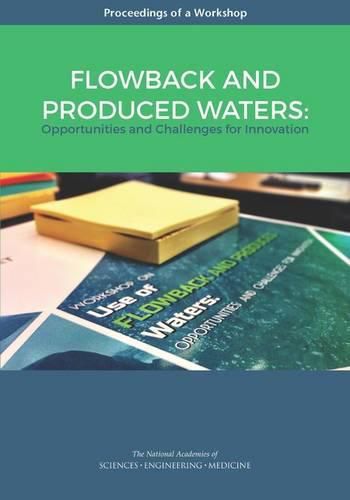Readings Newsletter
Become a Readings Member to make your shopping experience even easier.
Sign in or sign up for free!
You’re not far away from qualifying for FREE standard shipping within Australia
You’ve qualified for FREE standard shipping within Australia
The cart is loading…






Produced water?water from underground formations that is brought to the surface during oil and gas production?is the greatest volume byproduct associated with oil and gas production. It is managed by some combination of underground injection, treatment and subsequent use, treatment and discharge, or evaporation, subject to compliance with state and federal regulations. Management of these waters is challenging not only for industry and regulators, but also for landowners and the public because of differences in the quality and quantity of produced water, varying infrastructure needs, costs, and environmental considerations associated with produced water disposal, storage, and transport.
Unconventional oil and gas development involves technologies that combine horizontal drilling with the practice of hydraulic fracturing. Hydraulic fracturing is a controlled, high-pressure injection of fluid and proppant into a well to generate fractures in the rock formation containing the oil or gas. After the hydraulic fracture procedure is completed, the injected fluid is allowed to flow back into the well, leaving the proppant in the newly created fractures. As a result, a portion of the injected water returns to the surface and this water is called flowback water which initially may mix with the naturally occurring produced water from the formation. The chemistry and volume of water returning to the surface from unconventional oil and gas operations thus changes during the lifetime of the well due to the amount of fluid used in the initial stage of well development, the amount of water naturally occurring in the geologic formation, the original water and rock chemistry, the type of hydrocarbon being produced, and the way in which production is conducted. The volume and composition of flowback and produced waters vary with geography, time, and site-specific factors.
A workshop was conducted by the National Academies of Sciences, Engineering, and Medicine to highlight the challenges and opportunities associated in managing produced water from unconventional hydrocarbon development, and particularly in the area of potential beneficial uses for these waters. This publication summarizes the presentations and discussions from the workshop.
$9.00 standard shipping within Australia
FREE standard shipping within Australia for orders over $100.00
Express & International shipping calculated at checkout
Produced water?water from underground formations that is brought to the surface during oil and gas production?is the greatest volume byproduct associated with oil and gas production. It is managed by some combination of underground injection, treatment and subsequent use, treatment and discharge, or evaporation, subject to compliance with state and federal regulations. Management of these waters is challenging not only for industry and regulators, but also for landowners and the public because of differences in the quality and quantity of produced water, varying infrastructure needs, costs, and environmental considerations associated with produced water disposal, storage, and transport.
Unconventional oil and gas development involves technologies that combine horizontal drilling with the practice of hydraulic fracturing. Hydraulic fracturing is a controlled, high-pressure injection of fluid and proppant into a well to generate fractures in the rock formation containing the oil or gas. After the hydraulic fracture procedure is completed, the injected fluid is allowed to flow back into the well, leaving the proppant in the newly created fractures. As a result, a portion of the injected water returns to the surface and this water is called flowback water which initially may mix with the naturally occurring produced water from the formation. The chemistry and volume of water returning to the surface from unconventional oil and gas operations thus changes during the lifetime of the well due to the amount of fluid used in the initial stage of well development, the amount of water naturally occurring in the geologic formation, the original water and rock chemistry, the type of hydrocarbon being produced, and the way in which production is conducted. The volume and composition of flowback and produced waters vary with geography, time, and site-specific factors.
A workshop was conducted by the National Academies of Sciences, Engineering, and Medicine to highlight the challenges and opportunities associated in managing produced water from unconventional hydrocarbon development, and particularly in the area of potential beneficial uses for these waters. This publication summarizes the presentations and discussions from the workshop.